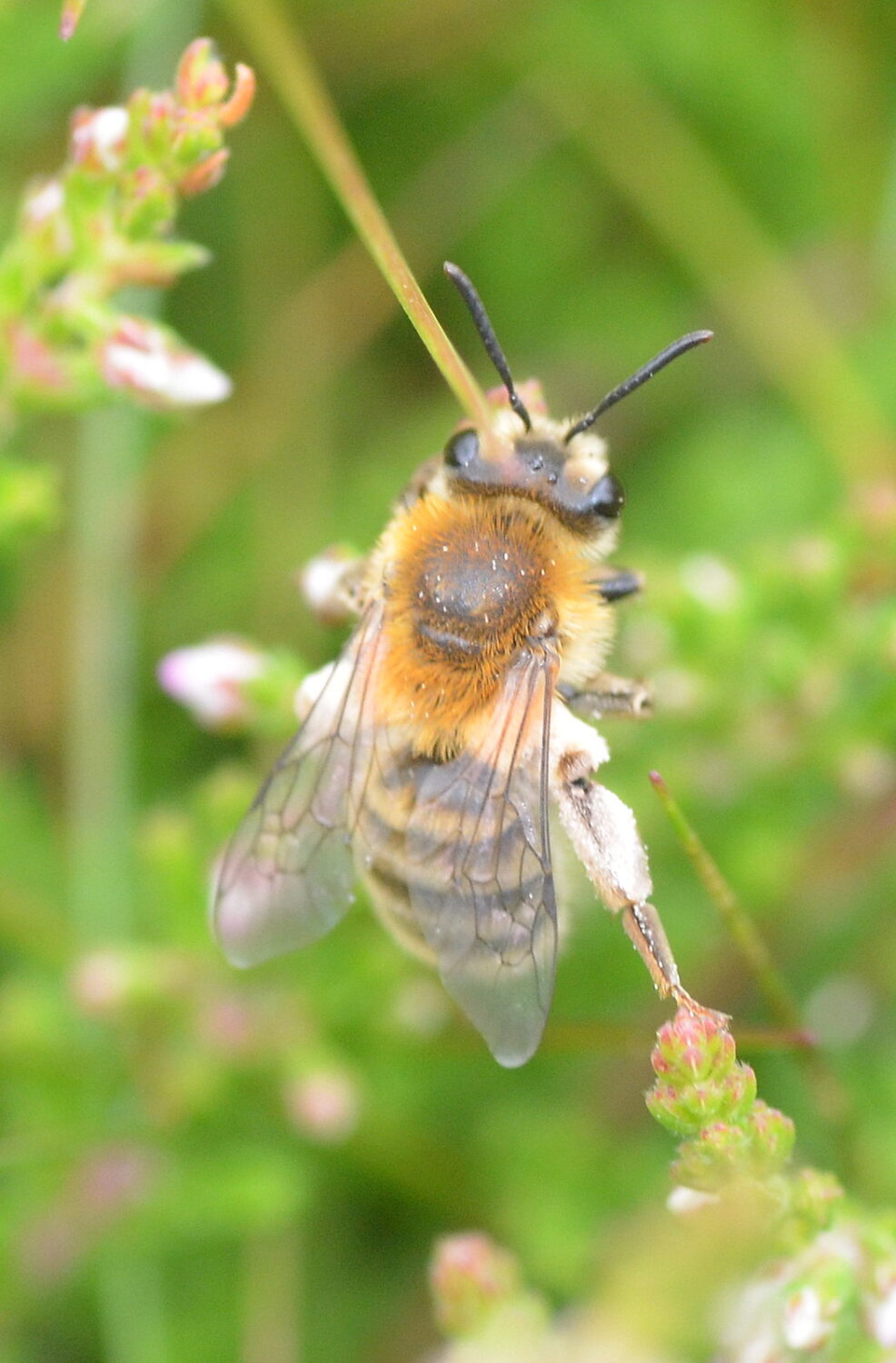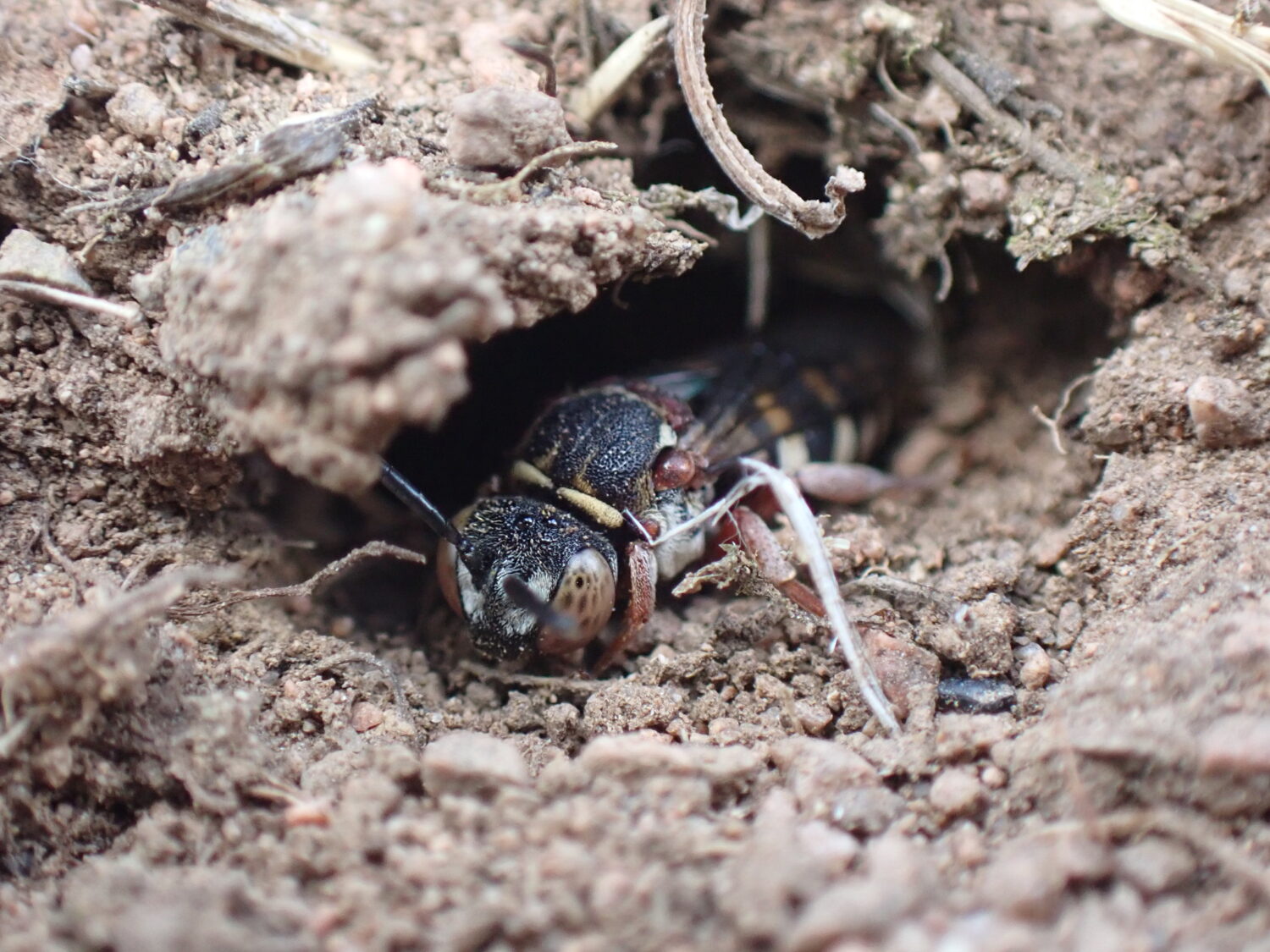As part of the North East Bee Hunt, take a closer look at three bees closely associated with Heather and heathland sites in the North East.
As many summer wildflowers come to their end for the year, Heather reaches full bloom, covering heathland with swathes of pinks and purples. Its flowers are an important late season food source for pollinators, with some species even specialising on its pollen. The sandy, bare ground also provides suitable nesting habitat for ground-nesting solitary bees, who can often be found nesting close together in groups.

Heather as food for bees
Also known as ‘Ling’, Heather Calluna vulgaris is a fantastic late-blooming wildflower for pollinators. Providing both a source of nectar and pollen, it supports many pollinators throughout late summer and into autumn.
In fact, its nectar even contains medicinal properties that protect bumblebees against internal parasites. Some solitary bees have even specialised on heather species as a pollen source, provisioning their eggs exclusively with heather pollen.
Garden varieties of winter-flowering heather are also an important source of nectar and pollen for early-flying insects, particularly queen bumblebees who emerge from late winter onwards.

Heather Mining Bee Andrena fuscipes
A species entirely confined to heathland, the Heather Mining Bee is a furry, gingery bee that peaks with the bloom of Heather in August.
Pollen is collected exclusively from heathers, particularly Ling. While the females may be found foraging on Heather, the males are most often observed whizzing around Heather plants in search of females.
Nest sites can be found in areas of bare ground amongst heathers, where females will dig into the ground to create their burrows.
In the North East, the Heather Mining Bee has been observed at heathland sites in the North Pennines.

Heather Colletes Bee Colletes succinctus
One of two late-flying Colletes Bees, the Heather Colletes is strongly associated with heather-rich sites. It is typically found on lowland heath but can use upland heath, and relies heavily on dune heath in northern Scotland.
Ragwort can also be used as a pollen source, with unusual populations even surviving on Ragwort in the absence of heathers.
Nest sites can be found in sandy ground, often as large aggregations. Also known as ‘Plasterer Bees’, females secrete a cellophane-like substance to line and waterproof their nests.
In the North East, this species can be observed in both Northumberland and County Durham, particularly in the North Peninnes.

Heather Epeolus Bee Epeolus cruciger
There are also some bees found in heathland that exploit of hard work of others: the cuckoo bees. Cuckoo bees do not collect pollen or build their own nest. Instead, they lay their eggs in the nest of others already stocked with pollen.
Epeolus bees are wasp-like, virtually hairless bees that exploit the hard work of Colletes Bees. This cuckoo bee lays its eggs in the nests of Heather Colletes Bee. Females lurk around nest sites until a female leaves her nest before entering to lay her own egg inside.
This cuckoo bee is likely to be found where there are good populations of Heather Colletes Bee. Look out for these wasp-like bees at nest sites.

Join the North East Bee Hunt
Urban or rural, beginner or expert, we need your help to record bees across the North East this spring and summer.
Your records can add to our understanding of bees in the region and inform conservation and monitoring efforts.
Taking part is easy and every record counts, wherever you live in the region. Records of all bee species are encouraged.